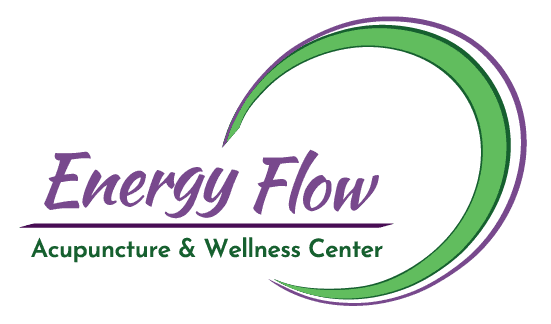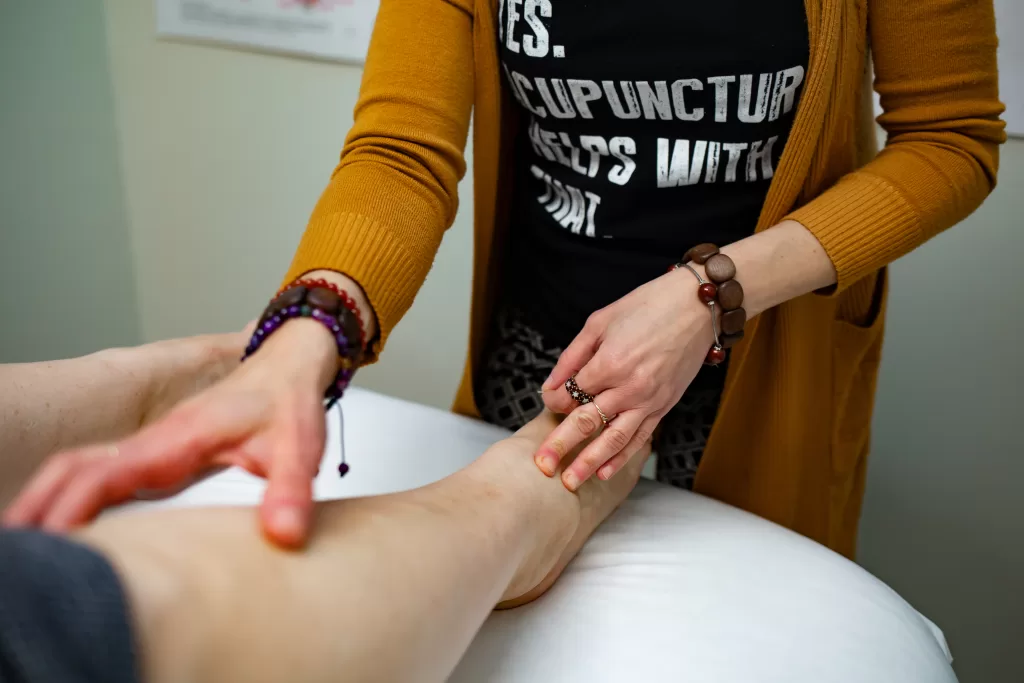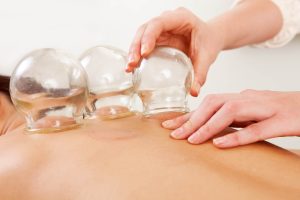-
 Energy Flow Acupuncture & Wellness Center24W500 Maple Ave Suite 212
Energy Flow Acupuncture & Wellness Center24W500 Maple Ave Suite 212
Naperville, IL 60540630-335-1069 Clinic Hours
By Appointment Only
Blog
Tidbits
Acupuncture for Chemotherapy-Induced Peripheral Neuropathy
Helping people recover from cancer treatment
Chemotherapy-induced peripheral neuropathy (CIPN) affects up to 90% of cancer patients receiving certain chemotherapy agents, causing debilitating symptoms that can persist long after treatment ends. The burning, tingling, and numbness in hands and feet not only impacts daily functioning but significantly diminishes quality of life for cancer survivors. While conventional treatments often fall short, emerging research demonstrates that acupuncture offers genuine hope for both chemotherapy-induced and non-chemotherapy peripheral neuropathy.
The Growing Evidence Base
Recent comprehensive research has solidified acupuncture’s role as an effective treatment for CIPN. A 2024 meta-analysis published in Frontiers in Neurology systematically evaluated multiple studies and found compelling evidence for acupuncture’s efficacy in treating chemotherapy-induced peripheral neuropathy. The researchers concluded that acupuncture significantly improved symptoms compared to both conventional medications and sham treatments.
The Journal of Cancer Research and Clinical Oncology published equally promising findings in 2023, with their systematic review (2023; 149:15939-15955) demonstrating consistent benefits across multiple clinical trials. These studies revealed not only symptomatic improvement but also measurable changes in nerve conduction studies, suggesting actual nerve repair rather than mere symptom masking.
Another fascinating study compared acupuncture to gabapentin plus vitamin B1, which is realistic as to the treatment choices patients have.
The study results were remarkable. Patients receiving acupuncture showed significantly greater improvement in neuropathy symptoms, pain reduction, and functional capacity compared to those on gabapentin. Perhaps most importantly, the acupuncture group experienced these benefits without the side effects commonly associated with gabapentin, including dizziness, fatigue, and cognitive impairment.
How Acupuncture Helps Your Nerves Heal
Acupuncture works on multiple levels to address neuropathy:
Improved Blood Flow: The tiny stainless steel thin needles increase circulation to your hands and feet, bringing healing nutrients and oxygen to damaged nerves while clearing away inflammatory substances that prevent healing.
Nerve Regeneration: Acupuncture stimulates your body’s production of nerve growth factors—proteins that help damaged nerves repair themselves. Studies have actually measured improvements in nerve function after acupuncture treatment. Acupuncture points are often located right alongside the nerves that have been damaged.
Natural Pain Relief: The treatment activates your body’s own pain-relieving systems, providing lasting relief from the burning and shooting pains of neuropathy.
Quality of Life Improvements: Beyond Symptom Relief
The benefits of acupuncture extend far beyond numerical improvements in pain scales. Studies consistently demonstrate significant enhancements in health-related quality of life measures. Patients report:
- Improved sleep quality and duration
- Enhanced ability to perform daily activities
- Reduced anxiety and depression related to chronic symptoms
- Better overall physical functioning
- Return to doing the activities that create joy and happiness
A randomized clinical trial focusing specifically on quality-of-life outcomes found that breast cancer survivors receiving acupuncture showed marked improvements across multiple domains, with benefits persisting weeks after treatment completion.
Clinical Evidence Across Different Types of Neuropathy
While much research focuses on chemotherapy-induced neuropathy, acupuncture’s benefits extend to peripheral neuropathy from other causes. Clinical experience and emerging research demonstrate effectiveness for:
- Diabetic peripheral neuropathy
- Post-viral neuropathies
- Idiopathic peripheral neuropathy
- Medication-induced neuropathies from non-chemotherapy drugs
The underlying mechanisms remain consistent regardless of the initial cause of nerve damage, making acupuncture a versatile treatment option for various forms of peripheral neuropathy.
Treatment Plans and Expectations
Effective acupuncture treatment for CIPN typically involves consistency and open communication to individualize care.
Treatment Frequency: Most studies showing significant benefits used twice-weekly sessions for 6-8 weeks, followed by maintenance treatments as needed. We find the same to be true in clinic, although some patients are able to reduce to once weekly after a few weeks. As symptoms improve, treatments can be spaced further.
Timeline for Improvement: Many patients begin noticing improvements within 2-3 weeks, with optimal benefits typically achieved by 6-8 weeks of treatment.
Safety Profile: Acupuncture demonstrates an excellent safety profile with minimal side effects when performed by qualified practitioners.
Integration with Conventional Care
Acupuncture works synergistically with conventional medical care rather than replacing it. Many oncologists now recommend acupuncture as an adjunctive treatment, recognizing its ability to provide relief where conventional options have limitations. The absence of drug interactions makes acupuncture particularly valuable for cancer survivors who may be taking multiple medications. It can usually be done in conjunction with chemotherapy treatments both on treatment and off weeks.
The Path Forward
As an acupuncturist, it’s exciting for me to see the benefits clearly realized in scientific research, beyond just my own experience.
For individuals struggling with CIPN or other forms of peripheral neuropathy, acupuncture offers a scientifically-supported path toward genuine healing. The combination of symptom relief, improved circulation, nerve repair promotion, and enhanced quality of life positions acupuncture as an essential component of comprehensive neuropathy care.
The journey from cancer treatment to full recovery need not be permanently shadowed by peripheral neuropathy. With acupuncture’s proven ability to promote healing and restore function, cancer survivors can reclaim their quality of life and move forward with confidence in their recovery.

Miscarriage and Mind-Body Healing
I remember going through a miscarriage with my first pregnancy. The actual physical pain was intense, worst than the worse cramps. Plus this pain was mixed with a slew of emotions. I remember the grief, sadness and embarrassment, for lack of a better word, for having told everyone so early about the baby. We had been so happy. Now what? It took time, and I wish I’d had support then. Since then I learned how important this support is, and ways I can provide support and healing assistance for others.
Pregnancy loss is not something that is talked about openly. A miscarriage is a loss before 20 weeks gestation, and approximately 20% of pregnancies end in miscarriage. So many women I have worked with never knew how common miscarriage was, especially for a first pregnancy, and they all expressed how they wish they’d known, and wished they’d known more about their options for going through it and also for self-care and the grief process after.
At Energy Flow Acupuncture & Wellness Center, I hold space for women to be with the feelings that remain after a pregnancy loss, and to be able to process it, all without judgement or expectation. For some it is a traumatic experience. Using Neuro Emotional Technique and Holistic Pelvic Care ™, together we can create acceptance and resolution. This not only impacts the mother’s wellbeing, but also positively influences any future pregnancies by clearing stuck energy from the pelvic bowl.
If you or someone you know needs support after a loss, no matter how many weeks or years have passed, please reach out to discuss this option for a more complete mind-body healing.

Cupping Therapy Naperville

Cupping Therapy in Naperville for Muscle Recovery
Cupping therapy, an ancient alternative medicine, has been used for thousands of years to promote healing and overall wellness. With its origins in traditional Chinese medicine, this technique has gained popularity recently among athletes and fitness enthusiasts seeking to improve muscle recovery. In this article, we will delve into the mechanics of cupping therapy, its effects on muscle recovery, and the benefits it offers.
The Mechanics of Cupping Therapy
Cupping therapy involves the placement of special cups on the skin to create suction. The cups can be made of glass, silicone, or bamboo, and the suction can be generated by heating the air inside the cup or using a mechanical device. The suction pulls the skin, underlying tissues, and muscles upwards into the cup, causing the skin to redden as blood vessels expand.
The procedure stimulates blood flow, releases muscle tension, and alleviates pain. The cups are typically placed for 5-20 minutes, depending on the desired effect and the practitioner’s recommendations. While some people may experience minor discomfort during the treatment, most find it to be a relaxing and therapeutic experience.
Effects on Muscle Recovery
Cupping therapy has been found to help muscle recovery in several ways, including:
Increased Blood Flow: The suction created by the cups stimulates blood flow to the treated area, increasing the delivery of oxygen and nutrients to the muscles. This increased circulation can help to remove metabolic waste and promote faster recovery.
Reduced Inflammation: The cups’ negative pressure can help reduce inflammation by drawing stagnant blood and toxins away from the muscles. This action allows for the restoration of healthy circulation and promotes healing.
Muscle Relaxation: Cupping therapy can help to relax tight muscles by lifting and stretching the muscle fibers. This can alleviate tension and help to restore a healthy range of motion, reducing the likelihood of injury and improving overall performance.
Myofascial Release: The suction created during cupping therapy can help to release restrictions in the myofascial tissues that surround the muscles. This can help to improve mobility and flexibility and reduce pain and discomfort.
Pain Relief: By stimulating the release of endorphins and promoting relaxation, cupping therapy can help to alleviate muscle pain and soreness, making it an effective adjunct to other pain management techniques.
Benefits of Cupping Therapy for Quick Recovery
Implementing cupping therapy into your recovery routine can provide several advantages:
Faster Recovery Times: Cupping therapy’s ability to promote increased blood flow, reduce inflammation, and relax muscles leads to accelerated recovery, enabling you to return to regular activities more quickly.
Enhanced Performance: The relaxation of muscles and improved range of motion resulting from cupping therapy can improve overall performance during athletic activities.
Injury Prevention: Cupping therapy helps to maintain healthy, flexible muscles, decreasing the likelihood of injury during physical activity.
Increased Well-being: Cupping therapy’s relaxation and pain relief can contribute to a greater sense of physical and mental well-being.
Complementary Therapy: Cupping therapy can be combined with other recovery techniques, such as massage, stretching, and foam rolling, to create a comprehensive, personalized recovery plan.
Incorporating cupping therapy into your muscle recovery regimen can offer several benefits, such as:
Faster Recovery Times: By promoting increased blood flow, reducing inflammation, and relaxing muscles, cupping therapy can help to speed up the recovery process, allowing you to return to your regular training routine more quickly.
Improved Performance: Relaxed muscles and increased range of motion can enhance overall performance during athletic activities. Additionally, the myofascial release provided by cupping therapy can help alleviate restrictions limiting your performance.
Reduced Risk of Injury: Cupping therapy can help to maintain healthy, supple muscles, decreasing the likelihood of injury during physical activity.
Enhanced Overall Well-being: The relaxation and pain relief associated with cupping therapy can contribute to a greater sense of well-being, both physically and mentally.
Complementary Therapy: Cupping therapy can be used with other recovery techniques, such as massage, stretching, and foam rolling, to create a comprehensive muscle recovery plan tailored to your needs.
5 Reasons Women Should Take a Probiotic
Why probiotics For Women
There are a dizzying array of probiotic products out there, so how do you know which to choose? Are they all pretty much the same? When do you need them? What are they needed for?
Probiotics for a healthy Vaginal Ecology
For those who tend to yeast infections, odors, unusual discharge, or dryness, itchiness, or any imbalance, a probiotic geared toward female health can make a huge difference, both in treating and preventing. The difference is that these bacterial strains are those typically found in a healthy vaginal ecosystem, versus other bacterial strains that are found in other ecosystems of the body. I typically have a patient take 1-2 capsules daily, and women often notice an immediate improvement! So easy, and there are no negative side effects.
Probiotics for Immunity
Our immune system is engaged every day as we encounter all kinds of viruses and bacteria and other microbes in our environment and our food. There are several places in our bodies that are susceptible, more or less for different people. We also are walking around with varying internal microbial environments, and not always ideal. Antibiotic use is a major culprit that negatively impacts our internal microflora. Most people have had multiple rounds of antibiotics in their lives, often even in childhood. This can set us up for a host of different problems (pun intended ;). This is why probiotics can be a smart tool for repairing our immune system. For example, someone who gets recurrent UTIs, it’s often due to an underlying imbalance of healthy and harmful or overgrown bacteria making the urethral tract an environment more suited to the wrong kind of microbes. Another example is recurrent sinus infections – their sinuses are growing harmful bacteria because the natural defense system was compromised.
Probiotics can help constipation and diarrhea
If healthy elimination has been elusive for you, try a probiotic. Again, taking a daily probiotic, and adjusting the dose as needed, and adjusting the strain combination, can work wonders for irregular bowel movements. Frequent loose stools are often a different imbalance than slow, hard, or sluggish stools, and therefore can require different strains of bacteria and/or beneficial natural yeasts. I work with my patients to determine what type they need if any, and to find the right quantity.
Probiotics Benefit Mood and Mental Health
Have you heard that the gut is your second brain? Did you know it produces a significant amount of neurotransmitters? Those are the chemical messengers such as dopamine that affect mood and mental health. So many cases of mental health challenges including anxiety and depression are linked to a gut imbalance. I always start with the gut when working with patients as a Chinese Medicine practitioner, I see the gut as the central tube that goes from mouth to anus, and that must be working properly for everything else to work right. It can’t be ignored even in cases of depression and anxiety, or premenstrual dysphoric disorder (PMDD), or mood irregularities and changes.

Probiotics support Whole Body Health
What about foods that support a healthy internal ecosystem?
I often hear people say “Well I eat yogurt”. And here’s what I say to that:
“From the store or homemade? Store bought yogurt has been pasturized, and sits in a package for a while, and you don’t really know what you are getting when you open it at home. Plus most yogurts are full of sugar, or come from commercially raised animals that are not in a humane environment. There are definitely options for healthy probiotic foods though! I recommend homemade 24 hour yogurt. This entails starting with high quality milk, whether from grass fed/pastured cows, raw milk from a trusted source, or organic and humanely raised, or choosing an additive free coconut milk. Then getting a quality culture starter suited to the milk you choose, and then allowing it to ferment accordingly, for 24 hours. Also making your own or buying quality lacto-fermented vegetables such as a sauerkraut.
I recommend the foods above especially to support an already healthy microbiome or someone who is well on the path of recovering gut health. But probiotic supplements can be the tool that helps you overcome serious health issues.
Finding the Right Probiotics
For quality probiotics from my trusted sources, I do have an online store here. When we work together I am able to prescribe a variety of beneficial bacteria that are right for you. Here’s to your health!
Chinese Medicine Diet and Nutrition Therapy
“For Who?” “When?”
These questions are the key according to Chinese Medicine Nutrition Therapy. No one diet fits an entire population. The one way of eating is individual to a person, living in a specific climate, at a certain age, during a given season.
In popular media, gurus will tout one diet over another – eat more of this, eat less of this, drink more water, eat less sugar, more fat, less fat, etc.
Ok, some of the things we hear are useful. Sugar, in its refined form, and added to pretty much everything, is not a natural way to healthy eating. Too much sugar is pretty much one thing I think everyone can agree is a recipe for health problems.
But maybe you’ve heard of keto, paleo, vegan, raw, juicing, etc. In my experience, and backed by the wisdom of the ages, Chinese Medicine has evolved and spanned and refined what works and what doesn’t on the individual level. What one eats depends on one’s constitution and health status.
Five Tips for Health Eating According to Chinese Medicine
Here are my 5 tips as a practitioner of Chinese Medicine, for a healthy way of eating:
- Eat According to Season
- Eat According to your Chinese Medicine Pattern
- Don’t eat until full. Eat until 3/4 full.
- Don’t eat close to bedtime
- Eat in a relaxed manner, don’t rush or multi-task during mealtimes.
Eating According to Season
One of the foundational concepts in Chinese Medicine is that people are a part of nature. The environmental climate directly impacts us, and if we’re eating in a way that is out of sync, then we’ll be affected. For example, in summer, someone who overheats easily would be encouraged to eat watermelon to help cool. Yet the same food in winter would not be appropriate. Light fresh salads are best in spring and summer because spring in the time when new plants sprout and grow, and in summer greenery flourishes. This aids our upward and outward Liver-Wood energy that is active in the spring and feeds the Fire element of summer. Yet in winter, salads should be consumed more sparingly if at all, because winter is a time of storage.
Eat According to your Chinese Medicine Pattern
This one is really important, and the best example is someone who is full of mucus and congestion is encouraged to stay away from mucus-producing foods such as all dairy, refined sugar, and wheat or doughy foods. Also, someone who is dry overall would be encouraged to eat juice moistening foods such as sweet potatoes, fats, and eggs.
Eat until 75-80% Full
Overeating taxes the digestive system which is often weak in many people. Leaving room is a key to longevity according to many studies.
Don’t Eat Right Before Bed
If we go to bed right after eating a full meal, our energy must go to digesting that food instead of going dormant into our healing state as it should for sleep. This can create excessive dreaming, groggy feeling in the morning, and overall sluggishness and lack of concentration the next day. I tell my patients to allow 3 hours between the last meal and bedtime. I also recommend fasting for around 12 hours every night to allow the digestive system time to repair and rest.
Relax during meals
It’s important although admittedly not easy, to just focus on eating during mealtimes. It’s so tempting to read something on our phones, watch TV, be cooking or cleaning while eating. But your Gastro-Intestinal system will thank you if you just sit, and chew, and perhaps talk lightly with friends or family. Mindful eating is becoming a lost art, and I encourage you to try it if you tend to multi-task at mealtime!

